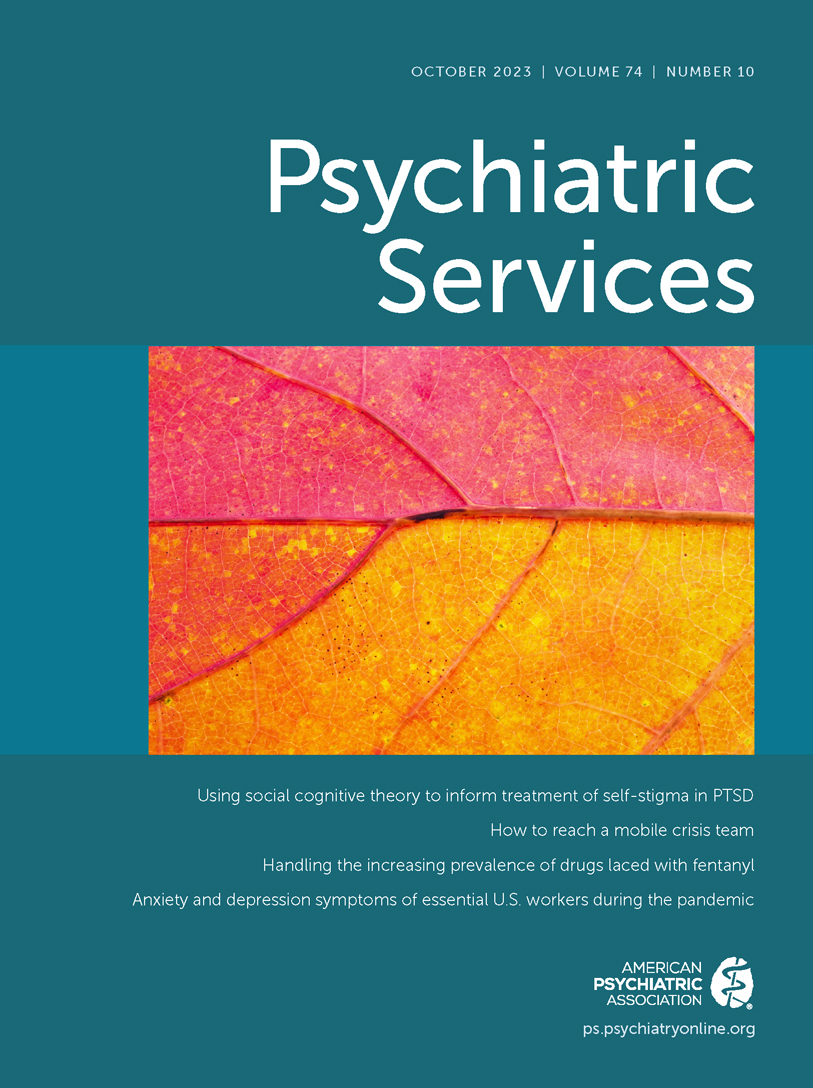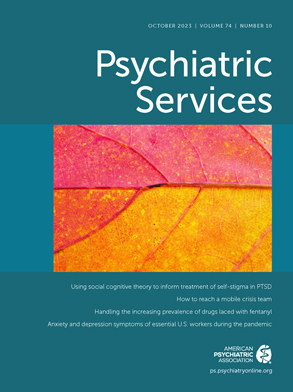Adults and children with co-occurring physical and behavioral health conditions are likely to have poorer outcomes and higher costs when they receive health services, compared with people who have either physical health or behavioral health conditions (but not both). Providing integrated physical and behavioral health services improves outcomes and contains costs, but provider organizations have been slow to integrate these services. Reasons for the delay include difficulties in adapting integration models to a variety of service settings, measuring progress, and connecting implementation and payment models with value. Finally, few integration models address health care disparities and social determinants of health, which are key societal issues that need to be addressed.
To address these issues, the Medical Director Institute of the National Council for Mental Wellbeing brought together an expert panel that included representatives from primary care organizations, payers, policy makers, and core members of the National Council for Mental Wellbeing to develop a novel approach to integrating physical and behavioral health care delivery to children and adults. The panel, which included the authors of this column, was tasked with creating specific guidance for a range of health care organizations on how to design, implement, and sustain integrated service delivery. The result, the comprehensive health care integration (CHI) framework, supports evidence-based best practices from research on integration (
1–
3) over the past 20 years and is aligned with nationwide initiatives such as patient-centered medical homes, Affordable Care Act section 2703 health homes, and certified community behavioral health clinics.
The CHI framework (see the
online supplement to this column) is an adaptation and expansion of the general health integration framework for behavioral health organizations (
4). The expert panel’s full report has robust appendices with examples and guidance to help provider organizations get started (
5).
The Eight Domains of Integration
The eight domains of the CHI framework provide an evidence-based foundation for progressive advancement of integration processes and interventions within a health care delivery organization. These eight domains of integration are screening, referral, and follow-up; prevention and treatment of common conditions; continuing care management; self-management support; multidisciplinary teamwork; systematic measurement and quality improvement; linkage with community and social services for social determinants of health; and financial sustainability (
5).
Each of these broad domains specifically addresses issues related to physical health, behavioral health, and social determinants of health in an integrated manner (
5). Progress in a domain is expected to improve integration of services within the program, practice, or organization being adapted with the framework. Measuring “integratedness” by using the domains of the CHI framework allows documentation of progress in implementation to guide efforts to identify additional improvement targets and objectives (for provider organizations), then uses these objectives as indicators of implementation success (for payers and regulators) (
5).
Organizations have the flexibility to customize their goals and implementation efforts within the structure of the domains by using any one of the three integration constructs, which we discuss next. The level of overall integration of a program or an organization will often vary over the eight domains, because it is common for some aspects of integration work to be more advanced than others.
The Three Integration Constructs
Because more than one way exists to deliver integrated services that support improved outcomes compared with those achieved via historical practice, a provider organization using the CHI framework may implement integrated services in different ways, depending on the organization’s size, resources, and local environment. On the basis of expert clinical consensus, the CHI framework identifies three integration constructs: integration construct 1 is screening and enhanced referral, integration construct 2 is care management and consultation, and integration construct 3 is comprehensive treatment and population management (
Table 1) (
5).
Each integration construct is an organized approach that has several evidence-based or consensus-supported core service elements for integration that can be implemented flexibly, depending on the capabilities and resources of a provider organization. The core elements in each construct can be adapted with some degree of consistency by organizations with different goals; the ambition of an organization’s target depends in part on its available resources. Each of the more advanced constructs (i.e., construct 3 is the most advanced) is assumed to include the core service elements of the previous construct, plus additional capabilities.
The constructs’ names describe the primary integratedness workflows the provider organization implements within one or more of the domains to be successful (
5). The constructs and domains together allow a provider organization to select one or more domains in which to focus integration efforts and to identify one or more issues or conditions for which metrics can be selected to measure the value of the integrated services provided (
5). The optimal choice of integration construct for a particular organization, as well as the number and type of co-occurring conditions addressed within that construct, will vary according to the organization’s current level of development, resources, capacity, and incentives (
5), as well as by the nature of the population served (e.g., adults vs. children, specialty care vs. primary care, mental disorder vs. substance use disorder).
The three integration constructs represent different strategies for carrying out integration activities. However, the authors of the CHI framework are not asserting that integration constructs 2 and 3 are the most desirable for every program, because the optimal choice for an organization at a particular point in time will vary. In this way, the CHI framework provides a road map for improving integration that can be applied by a wide variety of organizations and systems.
The online supplement shows the eight domains of the CHI framework and the phases of integration for each of the integration constructs. A health care organization might select the screening and enhanced referral construct as a goal, then work on the eight domain stages or workflows to achieve this construct. The organization may prioritize the screening and referral domain and implement workflows that consistently screen for prevalent conditions the treatment team can address or provide a referral for. For example, a behavioral health organization might prioritize tobacco screening and cessation counseling, given that these steps constitute an important evidence-based intervention, as well as helping patients engage with a primary care wellness visit in the calendar year. Critically important is the implementation of an enhanced referral workflow wherein patients receive assistance to ensure they follow through on a primary care referral to completion of the visit. Similarly, a primary care organization might implement workflows for depression and anxiety screening; for individuals who needed behavioral health specialty care, an enhanced referral workflow that ensured they would be able to engage with a behavioral health clinician off-site would be critical. Quality measures associated with this construct can show that patients received improved care, potentially justifying sustainable billing and incentives that support sustainability.
Reporting on activities and quality measures that reflect construct attainment documents progress in implementing integration, identifies additional improvement targets, and shares objective value metrics that justify continued support by payers and regulators. The CHI framework strengthens the key connection between the degree of integration of the three constructs and payment, because each integration construct incorporates an organized set of integrated services and metrics that provides a way to demonstrate value.
Value
The CHI framework addresses payer and policy maker goals of implementing
value-based payment. This term and similar phrases are appearing more frequently in state and federal procurement documents for Medicare and Medicaid programs and in research articles reporting positive outcomes, return on investment, reduced utilization, improved patient satisfaction, and value for care provided (
6).
Carefully implemented, measurable indicators of integration provide a means by which a provider organization, practice, or program can identify one or more co-occurring conditions to address or populations to serve through integrated service delivery. For example, an organization’s leaders may perform a practice assessment by using the CHI framework and determine that the organization is mostly in the screening and enhanced referral integration construct, although they want to work toward the care management and consultation integration construct. Leaders would then choose the domains in which the organization needs to advance, develop its workflows, and set up the measurement collection approach for the relevant quality metrics in that integration construct. The value of the integrated services is thus determined through the ongoing measurement of and reporting on the relevant outcome metrics for that construct.
Financing Implementation and Sustainability
There is clearly a need to reorganize the financing methods available to health care organizations to implement and sustain integration initiatives (
6). Currently, other than time-limited grants, support is not provided for start-up efforts within the CHI framework, and existing reimbursement through Current Procedural Terminology (CPT) codes is inadequate for sustainability. The CHI framework describes current payment methods, such as enhanced billing codes for screenings that apply to integration construct 1, case rates and monthly payments for care management programs in integration construct 2, and capitated per-member per-month payments with quality incentives for programs delivering integrated care in integration construct 3. The expert panel’s full report (
5) provides more details on options for organizations to consider as well as a strong caveat to engage with payers to win their support at the outset of integration efforts and ensure sustainability.
Proposed payment methodologies to facilitate service integration efforts fall into three broad categories, which are summarized in the expert panel’s full report (
5): CPT code service payments (usually fee-for-service payments), care enhancement payments (usually per-member per-month or prospective payments), and value-based payments (
5). Payment methodologies are matched with the implementation and sustainability of each integration construct in the expert panel’s report (
5).
For example, a provider organization may combine a per-member per-month bundled payment for a health home for chronic conditions with incentive bonuses for initiation of substance use disorder treatment within 30 days of diagnosis (process) and for a reduction in emergency department utilization (outcome) (
5). As an added incentive to achieve the substance use disorder treatment process target, the provider organization also receives a separate CPT code service payment at an attractive rate for initial implementation of screening, brief intervention, and referral to treatment (
5). Taken together, this package of payment methodologies provides a potential pathway for sustaining these services (
5).
Next Steps: How Is the CHI Framework Put Into Practice?
We encourage organizations working toward successful and sustainable service integration to run pilot projects in which they adopt the CHI framework, track activity, document outcomes, and share their findings with colleagues in formal and informal settings. Resources for connecting people and organizations with additional expertise that may help with program development, financing, and measurement can be found at the National Council for Mental Wellbeing (
https://www.thenationalcouncil.org/our-work/focus-areas/integrated-health) or obtained directly from the authors of this column.
The National Council for Mental Wellbeing will implement working pilot projects that include certified community behavioral health clinics and federally qualified health centers. The goal of these projects will be to assess the feasibility and utility of this bidirectional integration framework to advance service integration.
Conclusions
The CHI framework is ambitious, robust, well vetted among stakeholders, and aligned to support bidirectional integration. It incorporates social determinants of health and health equity principles; has full guidance for provider organizations to adapt in partnership with regulators, payers, and policy makers; and addresses significant implementation barriers and lessons learned from the concerted efforts of stakeholders over the past 25 years.

